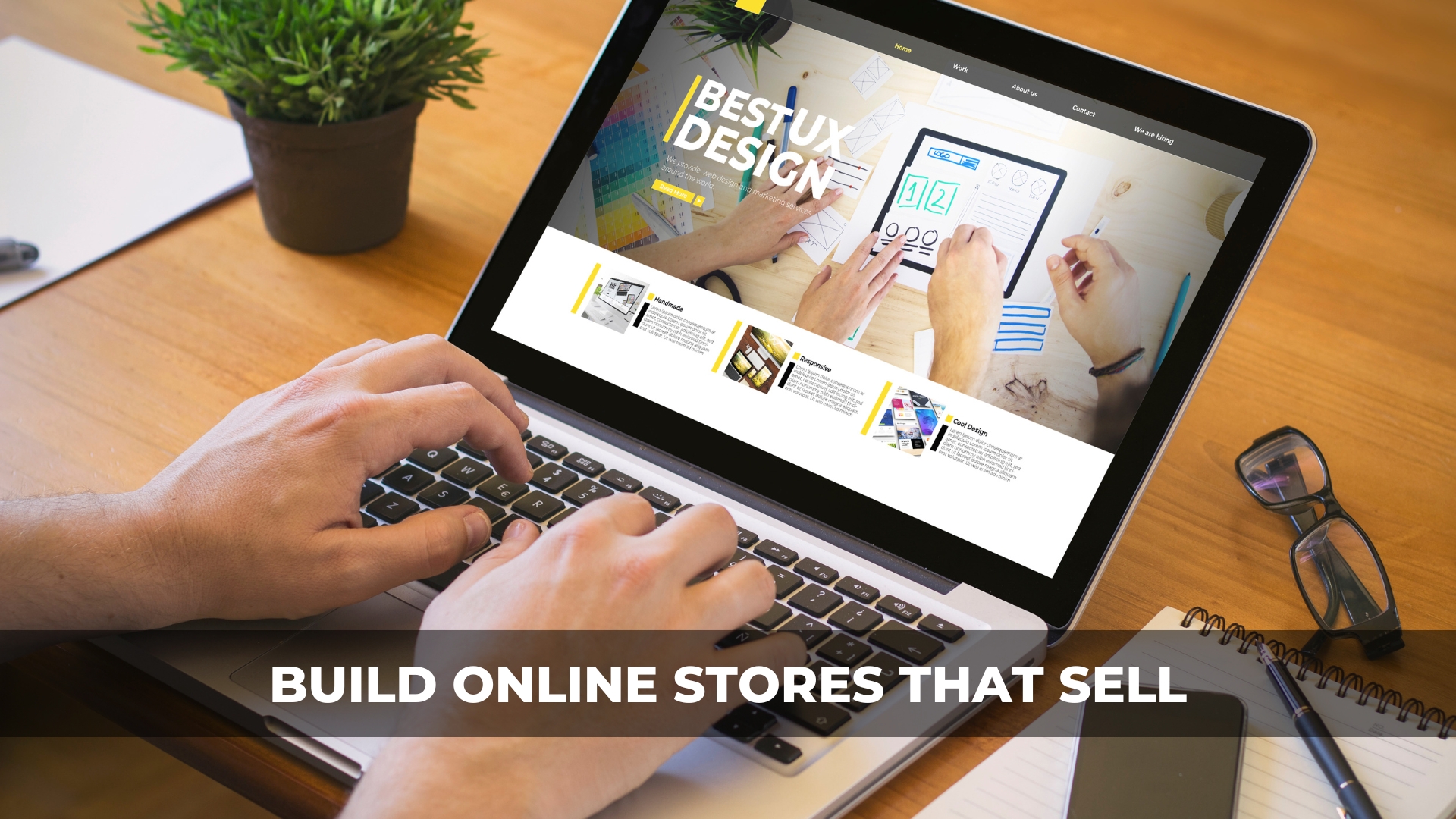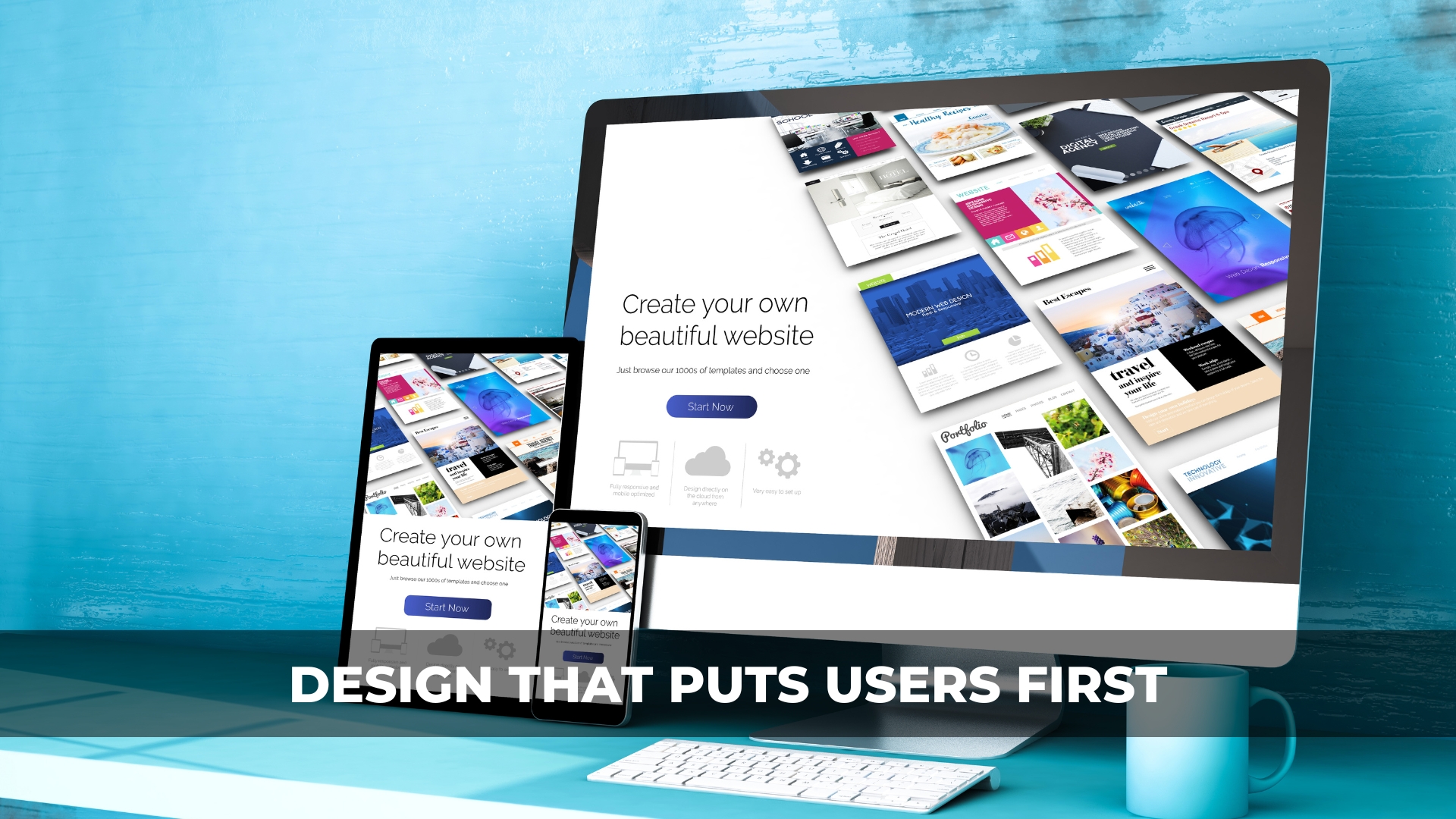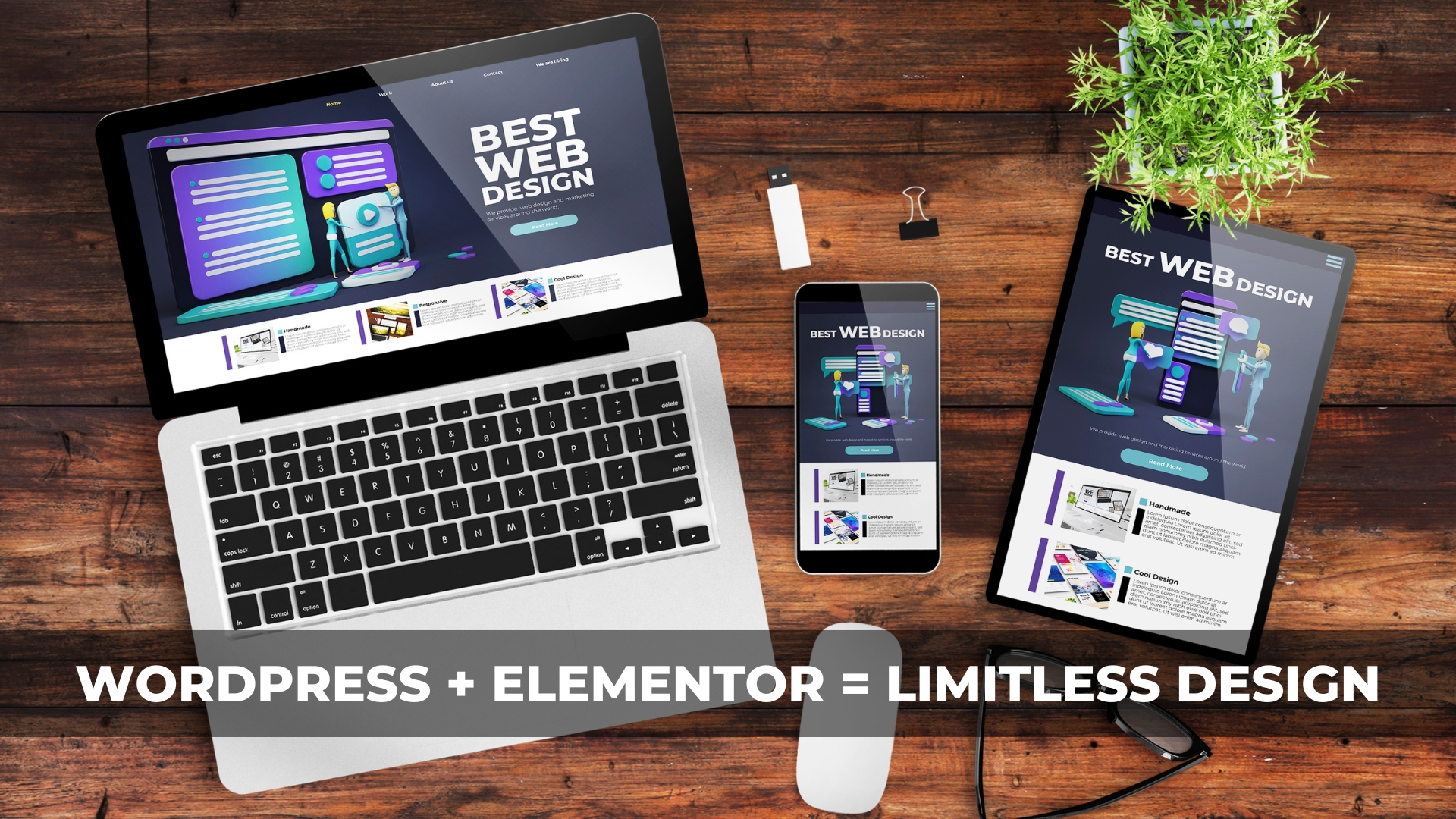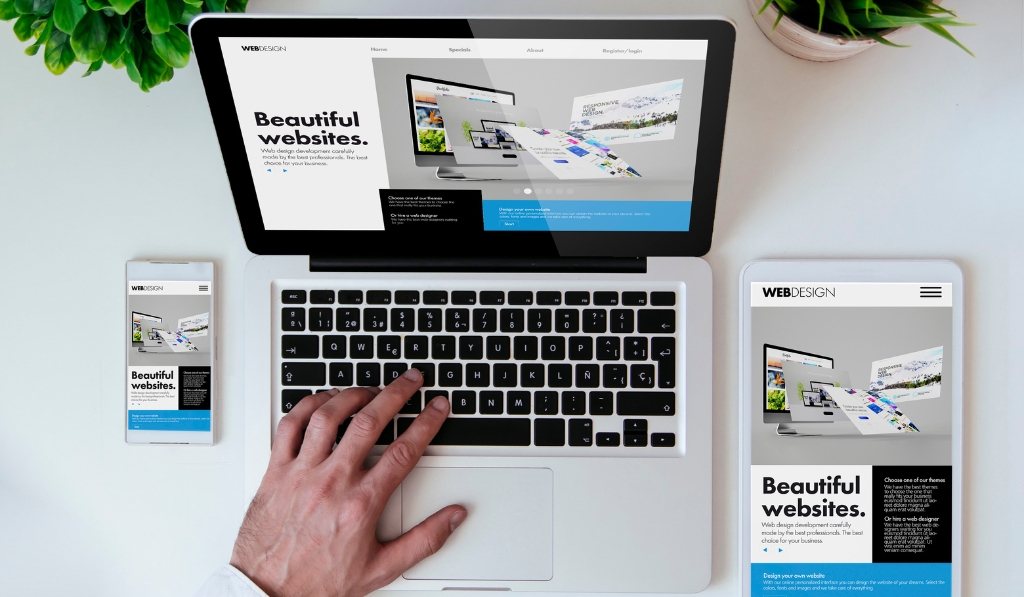As someone who’s been designing and developing websites for years, I’ve seen firsthand how a website’s design can make or break a business. A good website isn’t just about visual appeal; it’s a strategic asset that influences how users think, behave, and ultimately take action. From the very moment a visitor lands on your site, their perception of your brand begins to form. That first impression can either build trust and engagement or trigger doubt and disinterest. This is where good website design becomes essential—not just for aesthetics, but also for influencing customer behavior and driving long-term online growth. When I work with clients, my goal isn’t just to make their site look nice. My mission is to create a site that performs, converts, ranks, and truly represents the heart of their business.
First Impressions Matter: How Visual Design Shapes User Trust
Most people don’t realize how quickly a visitor judges their business based on the appearance of their website. Studies show that users form an opinion in less than a second. When I sit down with clients for the first time, this is one of the first things I explain to them. If your design feels cluttered, inconsistent, or outdated, visitors will subconsciously question your professionalism, even if your product or service is top-notch. I’ve redesigned sites where the client had excellent services but was losing business simply because the design didn’t reflect the quality or trust they offered.
Good website design isn’t just about choosing the right colors or fonts—it’s about using those elements strategically to create a clean, cohesive, and engaging user experience. I focus on building a visual hierarchy, using white space effectively, and maintaining consistent branding across every page. Elements like typography, spacing, and alignment might seem small, but they’re the details that give users confidence and make your business appear established, reliable, and modern.
How Navigation and Structure Guide User Behavior
When evaluating a website, one of the most important areas I examine is navigation. If a user can’t find what they’re looking for in the first few clicks, they’ll leave—and they probably won’t come back. Navigation is one of the foundational aspects of user experience, and it directly impacts how users move through your website. I’ve worked with clients whose bounce rates dropped significantly after we improved their menu structure and made the navigation more intuitive.
Good web design means thinking like the user. I carefully organize site architecture, creating logical menus, category pages, and internal links that help guide visitors toward the desired action. Whether that’s submitting a lead form, making a purchase, or booking a service, the path needs to be clear. A conversion-optimized structure also aids in search engine indexing, as crawlers navigate your content more easily, thereby improving your SEO footprint over time.
The Role of Mobile-Friendly Design in User Retention
In today’s digital landscape, mobile traffic makes up more than half of all website visits. That means if your site isn’t mobile-friendly, you’re losing a massive portion of your potential audience. When I build websites, I always start with a mobile-first approach. A responsive design ensures that users have a consistent experience, regardless of whether they’re using a smartphone, tablet, or desktop.
Mobile users have even less patience for poor design than desktop users. I’ve seen how a cramped, unoptimized mobile site can drive away leads. By utilizing flexible grids, scalable images, and mobile-ready navigation, I design websites that not only retain users but also increase time spent on site and lower bounce rates. Google’s mobile-first indexing also makes responsiveness a critical ranking factor, meaning a mobile-friendly website supports both user behavior and SEO growth.
Page Speed, Performance, and the Psychology of Waiting
Speed is another massive factor that influences user behavior. I’ve had clients come to me confused about why their website traffic wasn’t converting, only to discover that their pages were loading too slowly. When someone visits your site and it takes more than a few seconds to display, the frustration kicks in immediately. That negative emotion sticks with them, and it often leads them to abandon your site altogether.
That’s why performance optimization is a standard part of every website I design. I utilize tools like Google PageSpeed Insights to evaluate performance, and I employ techniques such as image compression, browser caching, and code minification to minimize load times. Lazy loading, asynchronous script execution, and CDN integration are also part of the toolkit. When your site loads quickly and runs smoothly, users stay longer, interact more, and are far more likely to convert.

Content Presentation and Readability Influence Behavior
Even the best content will be ignored if it’s hard to read or buried under poor design. I’ve worked on plenty of websites where the content was strong, but the presentation was holding it back. Good design makes your content more digestible, engaging, and impactful. I use clear font hierarchies, appropriate line spacing, and plenty of white space to give your content room to breathe.
Users should be able to scan your site and instantly understand what your business offers, the problem you solve, and the following action they should take. That’s where well-structured headings, visuals, and layout come into play. When content is easy to read and visually engaging, it establishes authority and encourages users to navigate the site smoothly. Whether you’re offering services, writing blog posts, or selling products, good design helps people absorb your message—and act on it.
Conversion-Focused Design Elements That Drive Action
The actual test of good design is whether it drives results. I always design with conversion in mind. This involves placing calls to action strategically, designing lead forms that are easy to complete, and creating landing pages that align with user intent. Every site I build includes design elements intended to increase engagement, such as sticky headers, trust badges, testimonial sliders, and benefit-focused messaging.
Tracking these behaviors is just as important. I integrate Google Analytics and other behavior-tracking tools, such as Hotjar, so we can analyze how users interact with the design. From A/B testing to heatmaps, I use data to refine layouts and improve conversion rates over time. A modern website isn’t static—it evolves based on how your visitors engage with it.
How Good Website Design Supports SEO and Organic Growth
Many people don’t realize that design plays a significant role in how well your site ranks in search engines. Google evaluates user experience signals—like mobile usability, page speed, and engagement metrics—when determining rankings. If your site looks great but performs poorly in these areas, your rankings will suffer. When I build websites, SEO isn’t an afterthought. It’s integrated into every design decision.
I implement structured data (schema markup), create internal link structures, and ensure each page has a clear keyword focus. I also build sites using SEO-friendly platforms like WordPress and configure plugins like Rank Math or Yoast for metadata control. Clean code, proper heading usage, and crawlable site structures all contribute to higher rankings. By aligning design with SEO best practices, I help clients drive consistent organic traffic that supports long-term growth.
E-Commerce Design Tips That Improve Buyer Behavior
If you’re selling products online, design becomes even more critical. I specialize in building eCommerce websites using WooCommerce and Shopify that are designed to turn visitors into buyers. Every element on an eCommerce site must be built with conversion in mind—from the homepage layout to the checkout process.
I focus on high-quality product images, user-friendly navigation, advanced filters, and intuitive cart flows. Features like “quick view,” smart search, and trust indicators make the buying process smoother and increase order value. Mobile cart optimization is also essential—especially since a large portion of online shopping happens on phones. If your eCommerce store isn’t designed with the buyer in mind, you’re leaving money on the table. A modern design built for behavior is one of the most powerful investments you can make.
Why Ongoing Website Maintenance Supports Long-Term Growth
Even the best-designed websites need maintenance. I tell every client that a website is like a living system—it needs regular updates, performance checks, and adjustments to keep growing. As your business evolves, your website should evolve with it. Design trends change, SEO algorithms shift, and your goals might expand. That’s why I offer website maintenance plans that include everything from speed tuning and plugin updates to design refreshes and SEO audits.
A strong maintenance strategy protects your investment and ensures that your site continues to support customer behavior in the right ways. Whether we’re optimizing for faster load times, redesigning landing pages based on analytics data, or implementing new features based on customer feedback, ongoing design improvements help you grow consistently and stay competitive in your space.
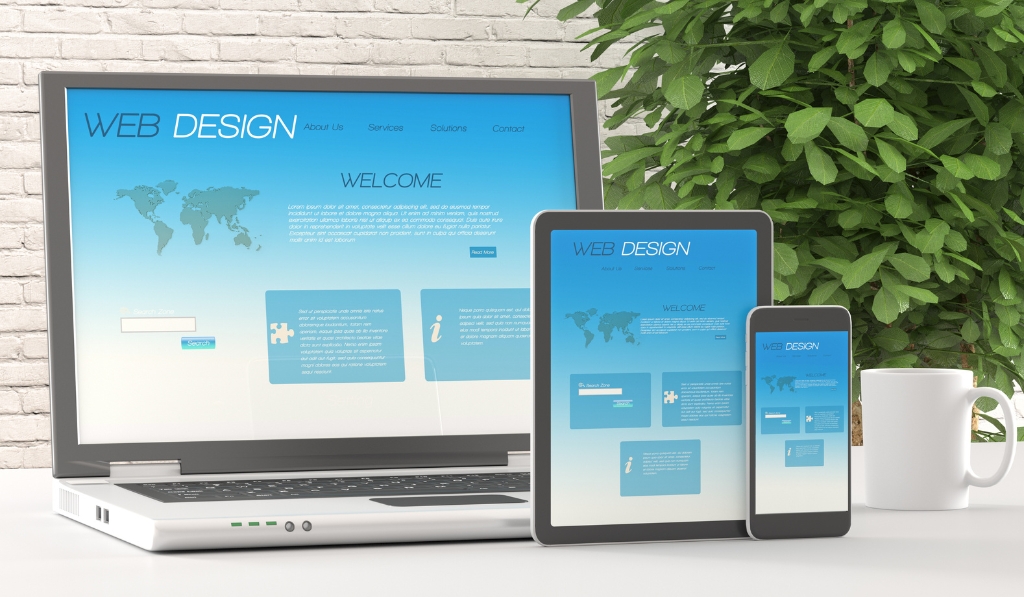
Frequently Asked Questions About Website Design and Customer Behavior
How does good website design influence customer behavior?
Good website design influences how users perceive your brand, their navigation experience, and whether they take action. When I build websites, I focus on user-friendly layouts, fast load times, and mobile responsiveness—all of which increase trust, reduce bounce rates, and guide visitors toward conversions.
Can improving my website design increase online sales or lead to more effective lead generation?
Yes, absolutely. A well-designed website improves user flow, highlights calls-to-action, and builds trust—all of which increase conversions. I use conversion rate optimization strategies, responsive design, and SEO best practices to help clients turn more visitors into paying customers or qualified leads.
Why is responsive design essential for modern website performance?
Responsive design ensures your website looks and functions correctly on all devices, including smartphones and tablets. Since Google uses mobile-first indexing, a mobile-optimized site helps improve SEO rankings. I build all sites to be fully responsive so users have a consistent and engaging experience everywhere.
Does web design affect SEO and organic growth?
Definitely, website design has a significant impact on SEO through factors such as page speed, mobile usability, site structure, and crawlability. When I design websites, I ensure that technical SEO is built into the layout, utilizing structured data, clean code, and SEO-friendly navigation to enhance organic visibility and improve ranking potential.
What makes a website design “good” from a user experience perspective?
A good design is clean, intuitive, and easy to navigate. It includes fast load speeds, strong visual hierarchy, responsive layouts, and compelling calls to action. My goal with every project is to create a seamless experience that keeps users engaged and leads them to take meaningful action.
Ready to Design a Site That Grows Your Business and Converts Customers?
If you’ve made it this far, you already understand how much of an impact good website design can have on user behavior and business growth. I’ve helped business owners like you transform outdated, underperforming websites into powerful, results-driven platforms. Whether you need a new WordPress site, an optimized WooCommerce store, or a conversion-focused redesign, I’m here to help.
I bring together years of experience, technical expertise, and a deep understanding of how users interact with digital content. My approach is never one-size-fits-all. I design with your business goals, audience, and growth plans in mind. If you’re ready to build or redesign a website that drives results, reach out and let’s talk. I’d love to learn more about your goals and show you how we can make your website work harder—for you.



